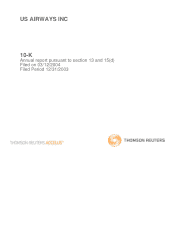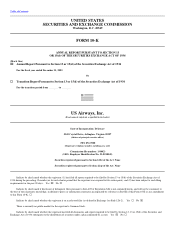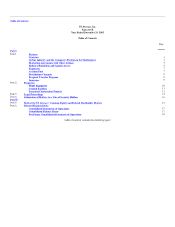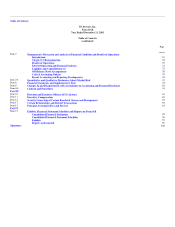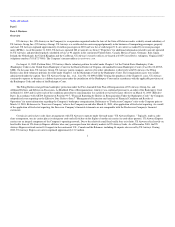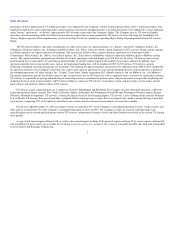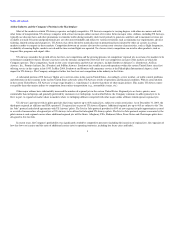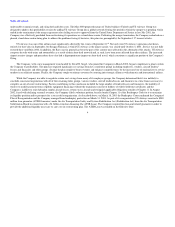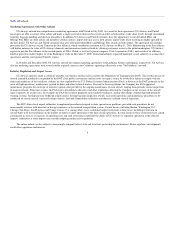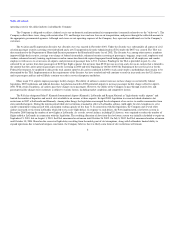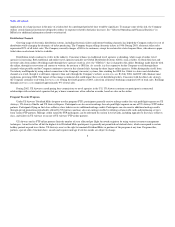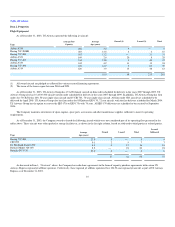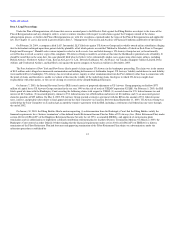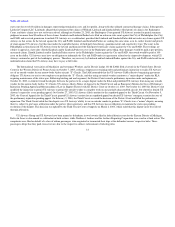US Airways 2003 Annual Report Download - page 9
Download and view the complete annual report
Please find page 9 of the 2003 US Airways annual report below. You can navigate through the pages in the report by either clicking on the pages listed below, or by using the keyword search tool below to find specific information within the annual report.
Table of Contents
unfavorable economic trends, and rising fuel and labor costs. The May 2000 proposed merger of United Airlines (United) and US Airways Group was
designed to address this profitability erosion by adding US Airways Group into a global network. During the period in which the merger was pending, which
ended in the termination of the merger agreement after failing to receive approval from the United States Department of Justice in late July 2001, the
Company was effectively precluded from restructuring its operations as a stand-alone carrier. Following the merger termination, the Company embarked on a
phased, stand-alone restructuring plan to address the problems facing it; however, this plan was preempted by the September 11th terrorist attacks.
US Airways was one of the airlines most significantly affected by the events of September 11th. Not only were US Airways' operations shut down
entirely for three days in September, but Reagan National, at which US Airways is the largest carrier, was closed until October 4, 2001. Service was not fully
restored there until May 2002. In addition, the East coast in general has been the part of the country most affected in the aftermath of the attacks. US Airways
competes heavily with trains and automobiles as a result of their short-haul network and, as such, have been more affected than other airlines. The increased
airport security charges and procedures have also had a disproportionate impact on short-haul travel, which constitutes a significant portion of the Company's
flying.
The Company, with a new management team headed by David N. Siegel, who joined the Company in March 2002, began to implement a plan to return
the Company to profitability. The plan first required significant cost savings from key constituent groups including employees, vendors, aircraft lenders/
lessors and financiers and other groups. Second, the plan sought to boost revenues and enhance competitiveness by the increased use of regional jets to service
markets in an efficient manner. Finally, the Company sought to enhance revenues by entering into strategic alliances with domestic and international airlines.
While the Company was able to negotiate certain cost savings from many of its employee groups, the Company determined that it was unlikely to
conclude consensual negotiations with all of the remaining labor groups, various vendors, aircraft lenders/lessors and financiers in a time frame necessary to
complete an out-of-court restructuring. Factors contributing to this conclusion included the large number of lenders/lessors and financiers, the inability of
trustees to modify payment terms of public equipment financings without the unanimous consent of holders of widely-held trust certificates and the
Company's inability to reject/abandon surplus aircraft leases, return excess aircraft and extinguish applicable obligations outside of Chapter 11. In August
2002, faced with declining seasonal revenues, the Company filed a voluntary petition for relief under Chapter 11 of the Bankruptcy Code for it to maximize
its liquidity position and its prospects for a successful reorganization. As described above, on March 18, 2003 the Bankruptcy Court confirmed the Company's
Plan of Reorganization and the Company emerged from bankruptcy protection on March 31, 2003. As part of its reorganization, US Airways received a $900
million loan guarantee (ATSB Guarantee) under the Air Transportation Safety and System Stabilization Act (Stabilization Act) from the Air Transportation
Stabilization Board in connection with a $1 billion term loan financing (the ATSB Loan). The Company required this loan and related guarantee in order to
provide the additional liquidity necessary to carry out its restructuring plan. The ATSB Loan was funded on the Effective Date.
4

